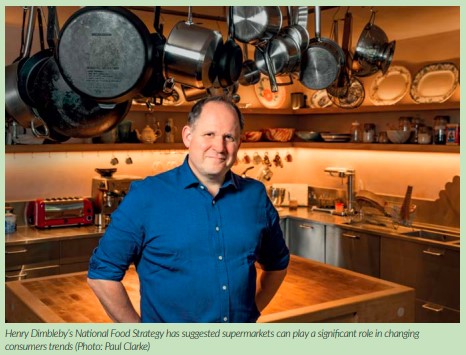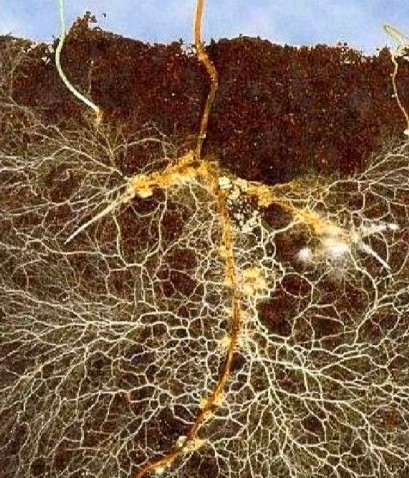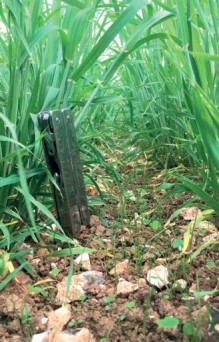Written by Chris Fellows
Farming is becoming as much about what we can’t see as what we can. We as farmers already know that. Many of the articles in this magazine cover what can’t be seen and the complexity of modern-day sustainable farming. Greenhouse gases in the air can’t be seen, our crops and tramlines can. Soil carbon under the ground can’t be seen, but soil on the road can. Soil microbiology can’t be seen but cover crops can. The carbon footprint of an avocado can’t be seen on its packaging, but our livestock can.
Farmers are becoming ever more berated for what can be seen. The public are being told that these visible elements are bad. Livestock are bad. The public don’t even seem to argue that much with this hypothesis, because if agriculture is bad then it takes the spotlight off their own carbon footprint as they board their flights to Ibiza.
“look at all that damage being done” they say to their kids, as they drive them the mile to school while picking up a Costa in a disposable cup on the way. The blame game is a distraction for them, one that is very effective. It also damaging, as it stops people from making changes in their own lives that would make a difference to the planet. The truth is we all need to make changes, not just say we are doing the right thing or carry on taking private jets and then just saying you have bought an offset.
We as farmers know livestock aren’t bad per se. CAFO’s in the states certainly aren’t the way livestock is going to be raised in a sustainable future, but livestock, in a rotation with crops, grass or other animals can be a very effective way to generate a closed loop farm that requires the minimum of inputs and creates the maximum of financial output. Read “Dirt to Soil” by Gabe Brown, if you want to understand closed loop farming better, he explains it far better than I could in a short paragraph. But what is clear, livestock are part of a closed loop farm, therefore the simple statement that a vegan lifestyle will save the planet is wrong in my eyes.

However, perception will only change if the public start to appreciate farming for what can’t be seen. As these are our silver bullets, the truth behind the myths that are propagated in the media and online. This is the battle of perception we face. I toyed with whether to use the word battle, but the more I think about it, the more I think we are at war. If you look at the massive money institutions behind processed food and lab grown meat, it’s a battle that we are doomed to lose unless some action is taken to educate consumers.
We need to define our bullets and start to repeat them enmasse.
Henry Dimbleby’s National Food Strategy is our first bullet. He has said that processed food is the enemy of health. That ultra-processed food needs taxing, heavily. It causes long term health problems and just like cigarettes needs taxing at an appropriate level to the damage it is causing. The unhealthiest food on offer in a shop should not also be able to be the cheapest. The healthiest options should be the cheapest, preferably then priced by distance from where things are grown to the shop they are sold in. Meat substitutes are generally classed as ultra-processed food. Whereas there is not going to be a meat tax, which is good as sustainably grown meat is better for the diet of the general public (and their carbon footprint) than often the media portray.
Second bullet is being local. The UK has a very robust climate, day to day our weather is unpredictable, but year to year, we are in a better position than many countries to keep farming and even increase the list of products we grow as climate changes and the planet’s climate changes. In June this year, researchers created a “shortlist” of five nations most likely to survive the apocalypse. The UK was ranked 3rd and Ireland 5th. The number one criterion was how much land is being used for farming compared to the population. Our climate, regardless of the changes we will see in the next 50 years will remain very suitable for farming a lot of land.
Thus, we can and should grow more of our own food. Certainly, more than 60% of it. Looking at the national Food Strategy, we need to grow more fruit (and nuts) and reading about the agronomic benefits of including trees on your arable farms (detailed by Mike Abrams in this issue) then why not have more fruit trees. But this fruit ideally needs to be sold locally. While Waitrose is very open to the discussion around local food, I think the best way is direct to consumer. More farms need a little farm shop that the public can buy from. More of the public need to go onto farms and see how food is grown sustainably. More of the public need to understand this complexity in farming.

Third bullet. Education centres. We now have a few agricultural education centres around the UK. Agri-Epi, Agrimetrics, NIAB, Daylesford and FarmED to name just a few. We need to use these better to educate the public. Which won’t be easy as the public don’t think they need educating, that’s what the media and Facebook are for! An obvious target is to get more schools to visit these centres, but kids also love junk food. They won’t change their diets on their own. We need to get more adults through the doors. I don’t think that needs to be on the basis of learning about farming, we could just offer these spaces to businesses that need meeting and conference space. The people then that come in the door can be influenced. But we should also all give up some of our time to organise events at these places. Get 50 people toegther and talk about how we farm. Assuming they all have families then just the readership of this magazine could influence over 2 million people from just doing one event each. I know talking to a group seems like a massive ask, but its easier and less daunting than you think. You really do understand you chosen subject and the public love the idea of regenerative agriculture.

Fourth Bullet. We need to create Ag tech that makes farmers more profitable, not just the ag tech companies more profitable. I recently read that Agri-Epi feel the key driver for any agricultural business they support is GVA. I would have loved to have been able to tell them why I feel this is wrong. I guess I am, right now. GVA (Gross Value Added) is the measure of the value of goods and service a company produces. Yes, businesses need cashflow, yes they need to make money, but GVA is not king and should not be treated as such. The GVA of each business is what contributes to GDP on a national scale. At a governmental level GDP growth is good, so you could say their attitude to GVA and Ag Tech companies meets national needs. But GVA is not good in every situation. Just take the reusable cup mantra that coffee shops promote. Using paper cups would drive higher GDP, but its not seen as good to do something so disposable. GVA that serves no purpose is not good. And this unfortunately is the history of farming. GVA has risen a lot in agriculture, but farmers have no reaped the benefit of this.
Going right back to the 1862 when Lincoln created the United States a Department of Agriculture. (see boxed information from the USDA at the end of the article). A statement that change would drive farming forward, change the way American’s farm. It did, synthetic fertilisers, crop protection products all have enabled farmers to produce more. But I’d challenge whether any of it has made farming more financially sustainable or profitable. Farmers aren’t better off, but agricultural companies are more profitable. Some of the world giants in financial terms have been built based on these changes. Ag Tech needs to start being measured in whether it makes farmers more profitable, not just give farmers the ability to grow more. GVA is not what I would be measured success as – sustainability is.
Fifth bullet, talk about complexity. The public has a view of farmers. A stereotype that we have all seen on many a TV show. It involves a flat cap or chewing straw and a character you find hard to understand. Clarkson’s Farm is also guilty of this a bit. He is certainly demonstrating how hard farming can be, but he isn’t demonstrating the finesse that goes on behind the scenes. Why a complex rotation is good for both a farmer’s pocket only in the long term and not always in the short term. That bumper yields can be achieved at the expense of the soil health in the short term. But this isn’t the right approach. That farmers look for complex rotations that will maximise revenues over 20 years. I think Clarkson’s Farm was guilty of this mistake.

He was advised to cultivate land that hadn’t been cultivated for years as it would get him a better yield that first year. He talked about the yield penalty. While it created some fun, it really isn’t what we should promoting. Complexity is. That farming is incredibly complicated to do successfully (in fairness I think Mr Clarkson has highlighted this element rather well). When given the chance, make yourself sound like a rocket scientist.
Sixth bullet, food needs a documented carbon footprint. I’ve saved this to last. What currently can’t be seen is the carbon footprint of food the consumers buy. Unless this is fixed, I don’t think we can win this battle. The good news is that consumers want this information. They want to buy food grown carbon neutral. Carbon neutral beef exists, but we have the mantra that livestock is bad and we need to eat less meat forced on us. Having it on the packaging that a product is grown carbon neutral changes all that. Consumers can buy what they want and the added element is that they will pay more for carbon neutrally grown food. However, the bad news is that the supermarkets have zero interest in doing this.
The cynic in me would say this is because they know the highest polluting foods have the most profit margin in them, but I am a cynic. Either way, I think it will require government intervention to do this, but doing it would change the face of food, eating and as that moves back, how we are rewarded for farming. The other problem is that the mills and processors don’t seem to care either. At the moment, carbon neutral wheat is dumped in the same pile as all other wheats. Despite it having more value, the mills don’t even care or ask farmers what their carbon footprint is or if they are carbon neutral. Once consumers require answers (and thus get an education on the food they buy) these questions will have to be asked downstream and the cream of UK farming will get paid better for what they grow. But you can tell this story.
You will note that you the reader can only help with a few of these bullets. When you are next asked about your farm, please talk more about what can’t be seen than one can. This complexity will help educate whoever you are speaking to. It’s a good habit for us all to get into. We can all be ambassadors for complexity.